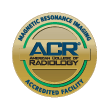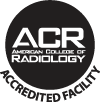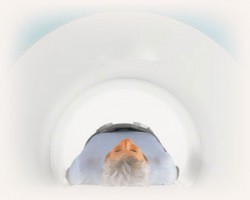
Unrivaled MR Expertise: Technology and Training
There is no better technology in the Central Valley than that offered at Advanced Medical Imaging and California Imaging Institute. Between Advanced Medical Imaging’s two General Electric 1.5T MR Scanners, and California Imaging Institute’s General Electric 3.0T MR Scanner and 1.5T Siemens Open Bore MRI, no other outpatient imaging center in the Central Valley can offer the same technological expertise. When it comes to sub-specialty training, CMI Radiology Group also offers the largest number of fellowship-trained musculoskeletal imaging specialists and neuro-radiologists than any other radiology group in Central California.
How does an MRI work?
MRI uses radio waves and a strong magnetic field rather than X-rays to provide clear and detailed pictures of internal organs and tissues. Because MRI can provide such clear pictures of soft-tissue structures near and around bones, it is usually the best choice for examination of the body's major joints, the spine for disc disease, and the soft tissues of the extremities.
When is an MRI necessary?
Using MR images, physicians can locate and identify:
- Causes of pain.
- Degenerative disorders (arthritis, deterioration of joint surfaces).
- Fractures not visible with use of X-ray.
- Herniated discs.
- Swelling or bleeding in the tissues in and around joints and bones.
- Small tears and injuries to tendons, ligaments, and muscles.
- Evaluate spinal cord trauma.
What to Expect
You will be comfortably positioned on a special table that slides into the MRI system. The technologist will perform the MRI sequences at the control unit in an adjoining room. You will be able to communicate with the technologist by means of an intercom, and music or earplugs will be supplied for your comfort. An MRI does not cause any pain, but you may find it uncomfortable to remain still during the examination. If an injection of contrast material is needed, you may have a cool sensation at the site of the injection.
How to Prepare
Preparations will vary depending on the kind of exam you are having performed:
For any MRI please plan on arriving 30 minutes prior to your appointment for patient registration.
An MRI uses strong magnets, so you will be asked to remove your watch, and any other jewelry or metal objects. You may also be asked to remove any makeup you are wearing, as some brands contain trace amounts of metal. Braces and fillings are not normally a problem.
- MRI of the gallbladder and bile ducts (MRCP)
- Nothing to eat or drink at least eight hours prior to the exam.
- MRI Arthrogram
- Patient is not required to bring a driver. However patients have encountered discomfort from contrast injections for hip arthrograms and may want to bring a driver with them.
- Any MRI requiring sedation
- Nothing to eat for at least four (4) hours and nothing to drink for at least two (2) hours prior to exam.
- Patient needs to bring a driver.
- MRI of the arterial blood vessels (MRA)
- If the exam is ordered with contrast: Nothing to eat for at least four (4) hours and nothing to drink for at least two (2) hours prior to the exam.
- If the exam is order without contrast: No preparation needed.
- Other MRI exams
- If the exam is ordered with contrast: Nothing to eat for at least four (4) hours and nothing to drink for at least two (2) hours prior to the exam.
- If the exam is order without contrast: No preparation needed.






